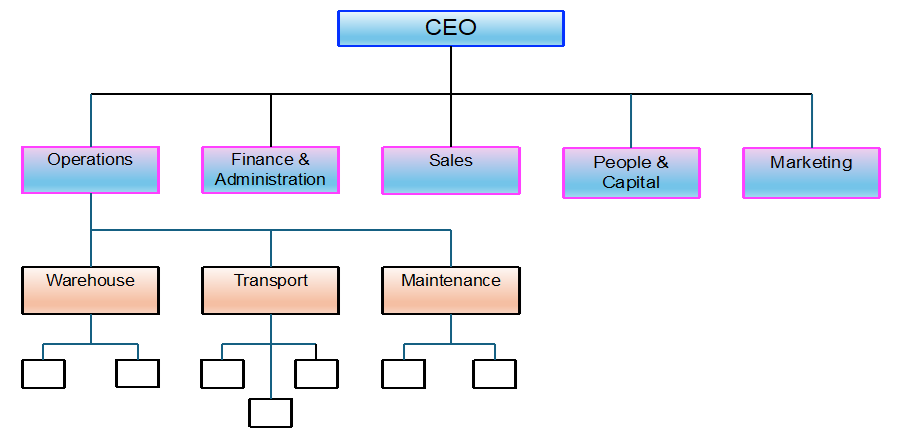Could success in business be reduced to a simple formula?
Perhaps each component of this formula embodies the critical elements that drive success. And perhaps without all three pieces of the formula, the other two simply do not have enough inertia to carry a business to success.
After looking closely at more than 1,000 businesses over the past four decades, after analysing what makes some businesses successful and why some come up short, after helping countless business owners understand and appreciate where and how they can improve, and watching them succeed, I reckon this formula has merit.
It was our mentor, John Clark who championed this saying over many years. All of the partners of our previous practice knew this (and many other sayings) from John’s extensive mental library of powerful truisms. We would have known over 100 such sayings. We all still use them every day!
1. Strategy
It seems obvious… and every business owner knows that they need to take time out from their day-to-day routine to look objectively at their business.
It is… to look at the issues that surround them, to understand what edge they have over the market, to see how they can build and drive their competitive advantage, to quantify the challenges & problems they face, and to understand their opportunities in the market and appreciate what might get in the way. It is to then prioritise these issues that define their current world and to overlay this to where they need to be. And then reduce this into practical, achievable, and accountable actions that can deliver the defined future outcomes.

That is strategy. It can be for the business, for succession, for marketing, for capital works, for estate planning or just for problem solving. It can be for all those things. The content invariably depends on the issues at hand and the attendees to a strategy plan.
Most importantly, a strategy plan represents a line in the sand. A rethink. A reset. A restart. A chance to identify, understand and correct problems before they cause further damage, or to capture new opportunities while they can still provide benefit.
Strangely, far few business owners make the effort, or make it regularly enough.
However, our most successful clients are obsessive. A few have engaged us to facilitate their planning every single year for well over a decade. Is it… that successful business plan… or does planning create successful businesses?
Whatever the causation, the outcome from strategic planning clearly shows where the business needs to head and how it plans to get there.
2. Structure
Another John Clark saying… “80% of business problems are structural problems”.
I once thought that this could not possibly be true but, over the years, having analysed problems and issues again and again, I suspect that maybe this one is accurate too.
What is structure?
For some businesses, it was that diagram that was drawn on the whiteboard some years ago that showed how the business parts and functions all fitted together. Or once fitted together. Or should have fitted… but never did. And listed the roles that were never defined. And the names of people who never fitted the roles. And to whom no-one was ever accountable.
Sound familiar? Hopefully not that bad… but we have seen plenty of organisations that simply don’t function properly because their structure was never properly defined, communicated, understood, adapted, nor lived. Every day and by everybody, including the owner.
It starts with the organisational chart. Simple is best. One boss for every person. Cross relationships within a firm are best seen as ‘clients’ rather than “direct reports”.
Typically, an Owner/CEO (or MD or General Manager) at the top. She (or he) has a team of managers, who run the functions such as Operations, Finance & Administration, Marketing, Sales, HR (or People & Capital) plus whatever suits the firm. No more than 6 direct reports so not to spread the effectiveness of a manager too widely. Flat structures are bad. Each manager is responsible for their team or area and the diagram builds from there.
Importantly, the structure determines the necessary roles. The roles must then be defined. Then people are considered for the roles, not the other way around. To adapt a role to suit an incumbent person’s shortcomings is to be avoided (although often easier said than done). Ideally, the role takes priority. That can involve tough decisions.

Having defined the role, then each of those roles needs a job description that is understood by every person who has each role. Your people must understand what is expected of them in that role. Because that expectation is how you will be judging their performance.
Get these structural elements right and the business is set for success.
3. Conduct
“The best laid plans of mice and men often go awry” (Robert Burns).
Conduct is how the business is managed and governed every day. It is what, how and when a plan is implemented (or not) in a real and changing world. It is how the business is driven and how near it comes to best business practice.
Best practice is not necessarily hard. But invariably it requires considerable discipline, a bit of research, study, and maybe, advice. It is often not exciting and requires the owner (or CEO) to take responsibility for all aspects of the entire business and all its stakeholders.
This is the art of running a business. The ‘black science’. Some business owners seem to find it easy; others take time to learn the necessary tricks and techniques that make it work. After all, many of our business owner clients first specialised in other disciplines (through work or education) and found an opportunity to turn that knowledge into a business. Running the business was rarely their first skill.
Learning how to run a business effectively is not easy. The owner needs to; ensure efficient meetings, drive communication, provide clarity of roles, give feedback, build systems, develop policies, instil procedures, deliver governance, develop strong culture, ensure fair and consistent discipline, provide relevant training, ensure proper onboarding, getting the right people, develop good career counselling and rewards, drive technology, delegate responsibility & authority, build systems for follow up, grow brand awareness, optimise pricing & margins and ensure proper and timely reporting & KPIs to see that it is all working. Amongst other things!
Of course, good systems and procedures makes a business stronger, less people dependant, more resilient, far more consistent, and less subject to the risk of arbitrary work habits. Proper pricing ensures that the business makes a profit and can optimise brand through awareness of competitive advantage. Effective marketing is all about building awareness of your client value proposition to the relevant recipients. Good people management is about investing in the precious asset that leaves the office every night. Innovation is about maintenance and growth of your market position relative to your competitors.
In the end, the owner/CEO has the overall responsibility to see that their strategy is effectively implemented and their structure works. The strategy may deal with people. marketing, pricing, systems, growth, efficiency, skills, or processes, but if those plans are not followed through, Robert Burns might be right.
And if people can undermine the management structure, then the structure does not work either. The job of the Owner/CEO is to develop their own systems to control the business to bring all the parts together and deliver on the strategy.
Whatever techniques the owner/CEO uses to stay on track, the effective conduct of the business is critical to ensure that a great structure and a smart strategy have every chance to deliver the business performance that is envisioned.
Chris Alp
